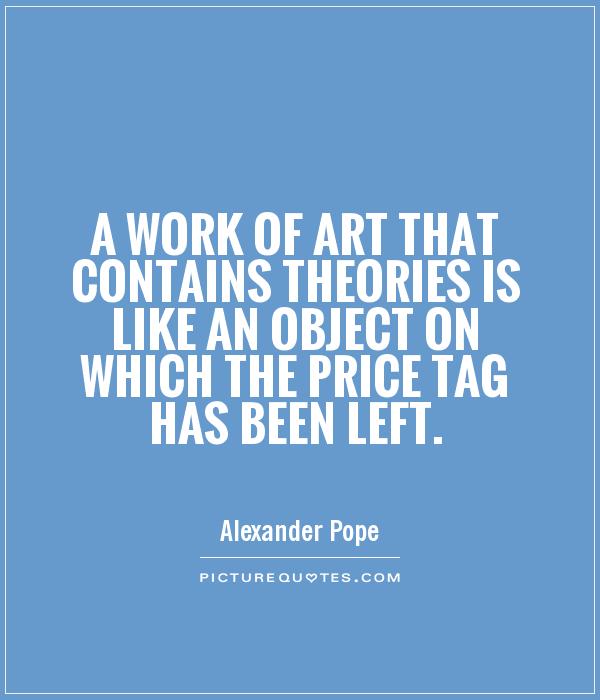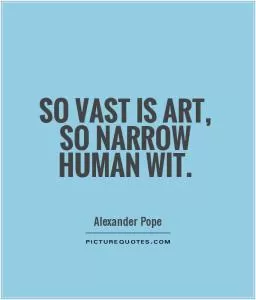A work of art that contains theories is like an object on which the price tag has been left

A work of art that contains theories is like an object on which the price tag has been left
Alexander Pope, a renowned poet and satirist of the 18th century, once famously said, “A work of art that contains theories is like an object on which the price tag has been left.” This statement holds a profound truth that resonates with the essence of art and its interpretation. Pope’s words suggest that when a piece of art is laden with theories and explanations, it loses its intrinsic value and beauty, much like an object that still bears its price tag.In the context of Pope’s statement, it can be inferred that art should be appreciated for its aesthetic qualities and emotional impact rather than being dissected and analyzed through various theoretical frameworks. When a work of art is overburdened with theories and explanations, it loses its ability to evoke genuine emotions and connections with the viewer. The essence of art lies in its ability to transcend language and communicate on a deeper, more visceral level.
Pope’s words also highlight the danger of reducing art to mere intellectual exercises. When art is approached solely from a theoretical standpoint, it runs the risk of becoming sterile and devoid of meaning. The beauty of art lies in its ability to provoke thought and stir emotions, not in its adherence to academic theories and concepts.
Furthermore, Pope’s statement can be seen as a critique of the commodification of art. Just as a price tag diminishes the value of an object by reducing it to a mere commodity, theories and explanations can strip a work of art of its uniqueness and individuality. Art should be appreciated for its intrinsic worth and the emotions it elicits, rather than being reduced to a set of theoretical constructs.












 Friendship Quotes
Friendship Quotes Love Quotes
Love Quotes Life Quotes
Life Quotes Funny Quotes
Funny Quotes Motivational Quotes
Motivational Quotes Inspirational Quotes
Inspirational Quotes